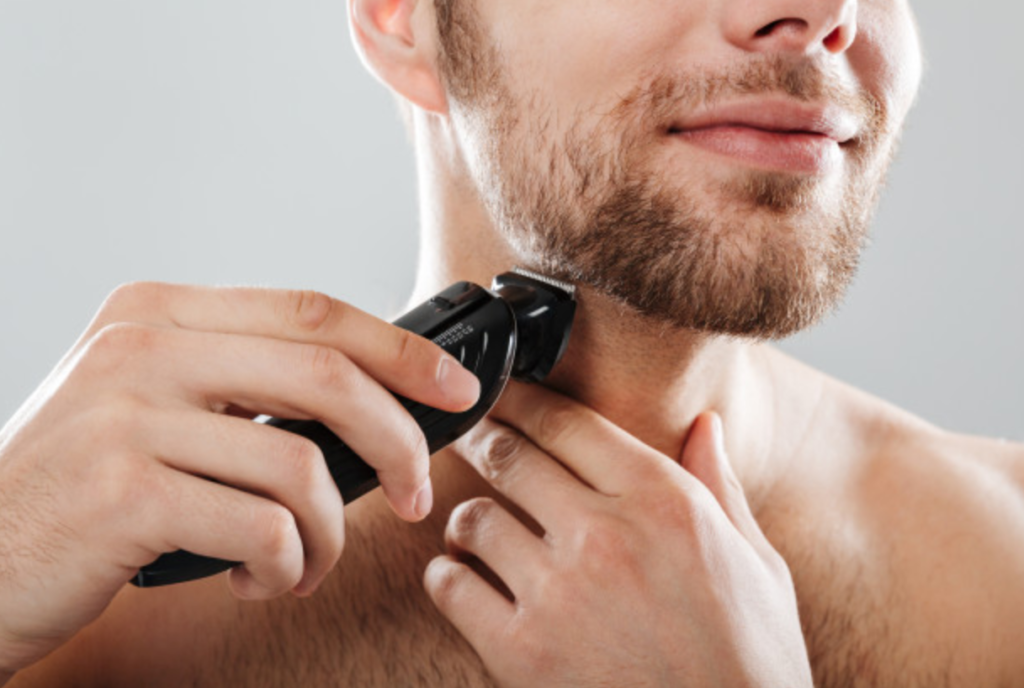How to Prepare for Cosmetology School
How to prepare for cosmetology school– What to Expect…
The jitters, excitement, and expectations, like waking up Christmas morning but dreading a new experience at the same time because it’s scary. Cosmetology school is intimidating. Or any kind of school in the beauty industry.
So we’re going to talk about how to prepare for cosmetology school and what to expect in your first days.
If you have researched the school and the program you have signed up for, like advised in How to choose the RIGHT cosmetology school for you, you have already begun the process of preparing for cosmetology school in the right way. Have confidence that you truly are prepared for day 1 of cosmetology school and that it will go well for you!

Day 1- Prepare for Cosmetology School, what to bring
On the first day, depending on the school and what program you have started, most schools start their classes by introducing their instructors and going over how their curriculum is laid out and scheduled for the duration of your training.
All you need to bring to cosmetology school -or barber school- theory (classroom and bookwork) is a pen and a notebook. Your instructors will expect you to be paying attention and taking notes.
The rest of your kit, if you are starting from scratch in a cosmetology, barbering, esthetics, or hairstylist program – not a crossover program – should be provided by the school in the first week of school.
I strongly recommend bringing plenty of water, snacks, and a lunch to your first day. However, you might want to go out to lunch if there is a quick place to eat in the near vicinity of the school.
Each state requires a mandatory number of hours to be clocked in at cosmetology school before you qualify for your state board license exam. So you always clock out for lunch.
Though every school has different policies about lunch hour when it is, and whether students are permitted to leave the premises or not. Though once you are on the salon floor (working on real clients in the cosmetology school salon) the front desk doesn’t keep track of who has gone out to lunch. You don’t want to miss a potential guest on the salon floor and the practice you might get, or get in trouble for not being present when they call you (even during lunch sometimes).
Anything else that you should prepare for cosmetology school and expect to bring on your first day will be specified by the school.
Supplies- provided by the cosmetology school or not
Let’s make this clear, you DO NOT have to prepare for cosmetology school by purchasing the tools for your kit yourself before your first class.
The only exception is a cross-over program. Which is when you already have a cosmetology or barbering license and you are returning to school to complete the hours for the other license and you already have your tools.
But when preparing for cosmetology school for the first time, you do not have to worry about getting your own tools ahead of time.
The KIT
Not all cosmetology schools and not all programs offer the same kit. But whatever is included in your kit is usually given to you in the first week… it’s like Christmas morning!
For the sake of simplicity, let’s say the kit we are currently opening is for a cosmetology program. Generally, you should be receiving a set of clippers, trimmers, a blow
dryer, a set of shears, thinning shears, combs, clips, cape, and apron. Some schools also include a razor, feather razor, and hot tools such as a curling iron or flat iron, color bowls, and color brushes.
Top 5 Best Professional Clippers 2022- Barber Reviewed
Top 6 Professional Hair Trimmers in 2022- Barber Reviewed
Best Blow Dryer for Natural Hair- Ask a Professional
Electric cutting tools
Clippers and Trimmers are what laymen call ‘buzzers’. The small ones are trimmers, used for edging and going around the ears, as well as designs. Clippers are the big ones, some have detachable blades and others don’t. Some clippers have a blade attached to a lever- which is an excellent tool to use when trying to do a perfect fade.
How to do a Perfect Fade- Tips from a Barber
Now, let’s talk about clipper guards, some schools include them in the kit and others don’t. Clipper guards are an attachment for the clipper that most shops use to get the correct length on the sides. You have probably heard the question asked at the salon before, “What number do we use on the sides? A #2, okay.”
Not all cosmetology schools encourage or even teach how to use clipper guard, but would rather students learn the skills of learning scissor-over-comb (a technique you will soon be familiar with) to measure length and blend.

Razors
There are several different kinds of razors.
More commonly included in barber’s kits, a straight-edge flip-open razor with a detachable blade. The old western razors that need to be sharpened with a strap are illegal to use in barbershops in the United States because they have been deemed ‘unsanitary’. Replacement blades must be purchased but are inexpensive and must be replaced with every client.
Which in my opinion is such a bummer. They’re so cool!
Feather razors are a razor with a guard. These are more often used -if included- in the cosmetology and hairdresser student’s kits. They give the haircut a more feathery finish to it, like the haircut isn’t quite fresh. Not everyone knows how to use a feather razor, the skill and techniques are being taught less and less.
Shears
Your bread and butter. Even for a barber, if you don’t have good shears (scissors) then you cannot do your job properly or professionally.
We do not call shears ‘scissors’ except to simplify in layman’s terms. But since you are a professional, or soon-to-be professional student, you MUST use the correct terms, call your tools what they are. There will be new words and terms to get used to in the hair industry, it’s like another language.
Treat your shears like precious gems or gold. Do not drop them! Do not use them for ANYTHING (like paper or string, or anything else) other than for their intended purpose, which is cutting hair.
If shears are dropped, you MUST to have an instructor look at them and feel if they have chipped or notched at all. It doesn’t matter how small the notch is if they are dropped, the shears will be damaged and will have to be re-sharpened before they can be used again. New shears are expensive to replace.
And NEVER cut past your second knuckle. You’ll know soon enough the mark of every hair professional. The small V scars are left on fingers and knuckles when shears miss the hair.
Shears are extremely sharp, they cut like butter, be extremely cautious when using them, especially at the beginning.
Thinning shears are used to de-bulk hair. They are shears with one smooth blade and another with teeth. When used the teeth only cut some of the hair but not all of it, thus leaving length but removing bulk and excess weight.
Bookwork- theory
The best advice I can give a cosmetology or barbering student is this, do all of your homework as soon as you can! Plan on this as you prepare for cosmetology school. Go into school with the mindset of finishing the classwork in class.
You will have downtime throughout the day, especially before you spend time on the salon floor working on real clients and models, so get your homework done early.
During your time in hair theory, you will learn the basics about hair structure, internal and external, as well as it’s chemical compounds and reactions to chemicals.
You will learn and practice cutting techniques, color (not dye! You dye Easter eggs, you ‘color‘ hair!), ergonomics, basic dermatology for skin diseases to learn when to refer someone to the hospital, if such an emergency should arise.
Some schools even study the history of the barber, which is actually quite interesting.
Most schools try their hardest to make theory fun by bringing in balloons, cupcakes, or crafts to practice techniques or instill other hair theory modules into your brain. Or they might give you fun projects or activities, like writing a poem or rhyme to remember something from the chapter.
In my cosmetology course, we had a ‘slumber party’ day when everyone wore pajamas and we did facials on each other.
While you are in the classroom you will also be practicing on your mannequins. Most schools provide you with mannequins, however, some do not, and though they are pricey I strongly recommend purchasing a human or yak haired mannequin. Synthetic hair will not cut even similarly, or curl or style properly to be of any good use to you.
PASSING STATE BOARDS
Believe it or not, what the school will emphasize the most in test prep is SANITATION.
If you cannot pass the written or practical state licensing exams portion about sanitation, you will fail. The cosmetology school’s entire goal is for you to pass the state board exam, and so that is what is emphasized the most.
Unfortunately, sanitation is made more of a priority than learning about hair.
Sanitation is important. To understand how dangerous blood-borne pathogens are and what kinds of risks not cleaning your tools after a knick or scratch to a client can lead to.
Again, as you prepare for cosmetology school set for yourself the mindset of starting all of the correct habits right off the bat. This way, you are already prepared to sanitize both your tools and your station in the same way before, after, and during every service.
This is what state boards wants. So, the school trains this way too. But it won’t be an issue for you, because you are already prepared!
A lot of times, the sanitation portion of your training is pretty straightforward and common sense. But, sometimes there are odd state regulations, like rules about neck strips, and sweeping the hair will come into play. Especially now that COVID is a concern. The most important thing we can do is keep ourselves and our clients safe.
You get what you pay for, but also what you work for.
If you work for the best, you’ll become the best. If your work reflects a half-hearted effort, that’s what you’ll get, half-hearted results.
Cosmetology school isn’t easy. It’s a challenging industry.
Many people start school thinking that it will be simple. They didn’t prepare for cosmetology school.
Sometimes after someone starts the schooling process they realize that they don’t like touching hair. Or they don’t like talking to people. A good portion of the job is talking to clients.
To get through the cosmetology (or barber, or esthetic training) successfully it is absolutely imperative to practice!
Practice on your mannequins, practice movements just with your hands in the air. And work on as many live models and clients as possible before graduating school!
Do your homework. Understand as much as you can on the bookwork, internal structure of the hair strands, chemistry, diseases, etc.
The better and more thoroughly you understand every aspect of hair, the easier testing will be and the less stress you will have when you take your state board licensing exam.
Don’t turn away guests that come to the salon floor. Embrace every opportunity to practice on live models while you have the support of instructors to help you, before being completely on your own.
Give your all and you will be the best! Put in the work, and you will reap the benefits.
How do you handle stress in cosmetology school?
Why is cosmetology school so stressful?
Because it’s new. New is good. It’s exciting!
The amount of information being poured into your brain during the year that you are in cosmetology school makes your brain hurt. But it gets easier, don’t worry.
The more practice you get the more second nature the basics are to you and the better your work is!
Handling stress takes intention. To intentionally take a break and breathe, refreshing yourself however you know that you need to. Treat yourself at least once a week to prevent burnout, especially if you are working and schooling at the same time.
Treat yourself to a Starbucks. Meditate. Go for a walk. Take a bath. Help yourself unwind and unplug from your day.
Not only is occasionally unplugging from life important to de-stressing but regular exercise and a healthy diet are also absolutely imperative to stay healthy during your stressful time in cosmetology school.
Preventing burn-out and taking care of yourself doesn’t take hours out of the week. And handling stress is key while working to get through the schooling season.
Once you have established how to handle your stress during school, these habits are established for when you work in a salon.
Work-Life Balance, Preventing Burnout in the Salon
In summary
This is how to prepare for cosmetology school, to put it simply, and what to expect in your first days.
Do your homework, know what you want to do before signing up for cosmetology school.
Once starting school, practice as much as possible, make sure you fully understand what you learn in theory, focus, and give it your best! You will graduate with flying colors and be as prepared as you possibly can for your state board licensing exam.
Is Cosmetology School for Me? 5 Questions to ask yourself and a few things to consider
20 Questions to Ask a Cosmetology School

